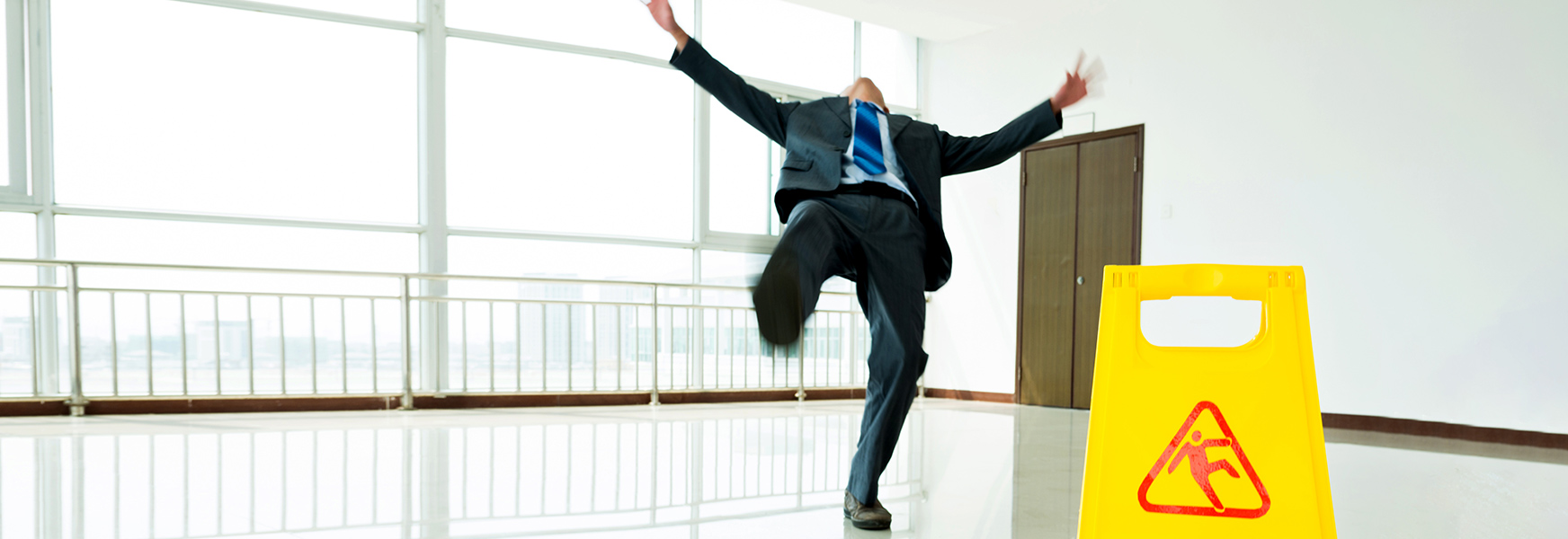A Science for the Art of Slipping: Take Charge of Your Traction

Consider this all-too-common situation… coffee in hand, Sam hustles across the snow-dusted parking lot in leather sole shoes. His phone rings. Before he can answer “What’s up?” he’s down! His heel slipped on black ice sending him off balance where gravity took over.
Why? Shouldn’t he have been able to regain his balance? Why does one person fall on ice or a grape that fell off a lunch tray, or water in the hallway, and another just keeps on walking?
The why of a fall is partly explained by TRIBOLOGY - the science of friction, lubrication, and wear. Tribology provides numbers that help us understand the friction between surfaces. This number is a coefficient of friction (COF), and describes the surface friction from zero (no friction) to one (high friction). Not surprisingly, black ice has a very low COF.
The American National Standards Institute (ANSI) set a minimum standard COF for walking surfaces at 0.42μ (ANSI A137.1 & 326.3). Floors with a COF below that number contribute to fall risk. CNA Financial Corporation recently published a tribometry study of hard surface floors in commercial settings and surprisingly found that barely half of the floors met this safety standard. Clearly, there is work to be done to reduce commercial flooring slip risk. According to the National Floor Safety Institute, over one million hospital emergency room visits result from slip and fall incidents each year. It’s time we all work together to reduce this significant hazard and keep employees, friends, and families safer.
However, simply replacing flooring with high COF flooring would not solve all the commercial building slip risk. It is an important step (pun intended), but COF is not the only factor in slip and fall risk. Lots of variables can decrease the COF affecting a walker. Oil, water, cleaners, or even dry materials like dust and gravel can increase slipperiness. Dry snow became the lubricant in Sam’s story, reducing traction between his shoe and the ice.
Maintenance routines are a crucial factor in flooring risk management. Cleaning products, tools, and methods can increase slip hazards. The wrong products, too much product, soap residue, failing to strip previous product, and failing to buff according to flooring guidance are all factors that can change floor safety. CNA’s report tells us that businesses would be wise to review current floor maintenance practices and ensure that surfaces are maintained according to the flooring manufacturer’s guidance. Further, knowing how snow and ice will affect the slipperiness of floors and planning accordingly makes sense as well.
Not in charge of flooring at your workplace? Then manage what you DO have control of. Reduce your personal risk for a slip and fall. When rain or winter weather are in the forecast adapt your footwear.
Choose slip-resistant footwear with these characteristics:
- High friction material
- Larger heel contact surface
- Tread patterns across the width of the sole to channel water away from your step
Adjust your walking style:
- Take shorter strides with slightly flexed knees, keeping your center of gravity more stable
- Leave a few minutes early to allow for a slower pace
- Be aware of the walking surface and conditions
- Have your hands free for balance; carry items in a crossbody bag
Consider your usual footwear inside and out:
- Does the sole have traction on the surfaces you travel?
- Does it contribute to a stable center of gravity?
- Is your foot properly secured with laces or straps?
- Would traction enhancers be helpful outside?
Take action when you recognize a slip hazard:
- Promptly clean up any spilled liquids or other contaminants
- Use “Wet Floor” signs where applicable
- Use plenty of salt and sand outdoors in freezing weather
For more information, check these resources from EHS Today, Occupational Health and Safety, and previous Safety Net posts from Peter Koch entitled, “Stay SAFE from the Winter Slip and Fall” and “What’s on Your Feet This Winter?”.

